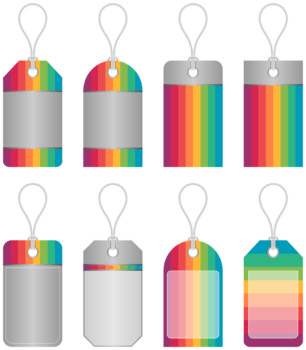Design Your Prices

Critically thinking through the design of your business’ prices can yield significant results to the bottom line, not to mention relieve operational pressures and enable investments in innovation. Here's a framework for understanding your price design along with first steps you can take to improve this critical element of your profit model.
The Impact of Price & The Importance of Design
Did you know that a 1% increase in price, results in a 6.7% increase in profit?
Run the numbers with me: Assume your business has $1,000 in Sales, $850 in Costs, resulting in $150 of Profit. Now add a 1% increase in price ($10), flow it to the new $160 Profit, and boom — a 6.7% increase. That’s almost seven times growth!
That’s why we say “price” is one of the three critical decisions in your business’ financial design. Our team’s Financial Design Method™ is about the thoughtful architecture of the money flowing into and out of your business, rather than simply accepting how the market or competitors say is the only way it ‘should be done’. Following that approach inevitably leads to the stresses of commodity competition, but it’s being an innovator (including around price) that leads not only to surviving the waves of change, but thriving atop them.
Price Should Follow Value
At its core, “price” is “the degree you participate in the value you create with your customers”. Expressed in a formula:
Value Created - Customer Profit = Price
Therefore, in order to design your price you must first understand your value. Understanding value is easy in concept, but hard in practice. Only a deep understanding of your market and customers will begin to unearth these gems, not to mention it's a dynamic reality that evolves over time.
There are numerous entry points into understanding your business’ value, but here’s one reflection by a friend a colleague Ron Baker of the VeraSage Institute:
• If you charge for stuff, you are in the commodity business.
• If you charge for tangible things, you are in the goods business.
• If you charge for activities you perform, you are in the service business.
• If you charge for the time customers spend with you, you are in the experience business.
• If you charge for outcomes the customer achieves, you are in the transformation business.
As you examine your business, which component(s) are applicable to the value you create for your customers?
Only after you’ve sufficiently articulated them, are you ready to start designing your price.
Designing Price
So once you understand the impact of price design, and you’ve got a solid understanding of the value your create for your customers, it’s time to actually design the price itself. We tend to think of price as a one-dimensional number, but price is actually a multi-dimensional reality of which numbers are only one piece.
For example, consider:
• What do you actually attach price to? Does it attach to the passage of time? (e.g. ‘hourly billing) The performance of a task? (e.g. ‘fixed price’) A financial outcome? (e.g. ‘contingent pricing’) A membership period, volume, or license? (e.g. ‘subscription’) A physical object? (e.g. a component warranty and/or upgrades) Etc. Whatever price attaches to frames for your customer how you want it to be evaluated and will therefore influence their decision process.
• When will you price? Are prices programmed into a website to facilitate self-purchasing? (e.g. ‘menu pricing’) Are prices on a pre-determined schedule that’s fully quoted during the initial consultation? (another version of the same). Are prices on a pre-determined schedule that’s shared in advance, but the final price isn’t known until work is completed or time elapses? (‘unit pricing’, ‘hourly billing’, or ‘time and materials’) Are prices set or influenced by an external source? (e.g. ‘regulated price’ or ‘guaranteed lowest price’) Are prices only discussed after a conversation about value to be created and shared? ( e.g. ‘value priced’) Etc. The point(s) in time when you talk about and present price play a big role in helping your prospect arrive at a purchase decision.
• How will you structure price? Will there be one possibility or options? Will there be minimums and/ or a maximum? (e.g. ‘minimum access price’ or a ‘not to exceed’ price) Will it be paid all upfront, certain percent down, pre-determined series of installments, balance only paid on satisfactory completion? Will there be a money-back guarantee? Will it be billed on completion and paid net 30? Will there be late payment penalties? How about trigger clauses around milestone and/or date requirements? What happens if either party wants to make changes or even fully extricate mid-stream? Etc. All of these “hows” can prime the purchase and work for success or failure.
The above are just a start on the list we go over with entrepreneurs, but hopefully it begins to reveal the deep dimension of colors available on the price design palate that extend way past ‘a number’.
Pricing Strategy Must Match Business Strategy
With this new vista open in your business’ profit model, how should you begin and what should guide the design of your prices? Our advice to anchor the whole process is: “your pricing strategy must match your business strategy”.
A careful consideration of your customers, market, value, industry, channels, brand, and more will shape which possibilities make sense and which are incongruous. Combine that with an experimental mindset and method, and you are well on your way to a price design that will serve both you and your customers well, thereby setting you apart from the market and fueling the future of your company.
